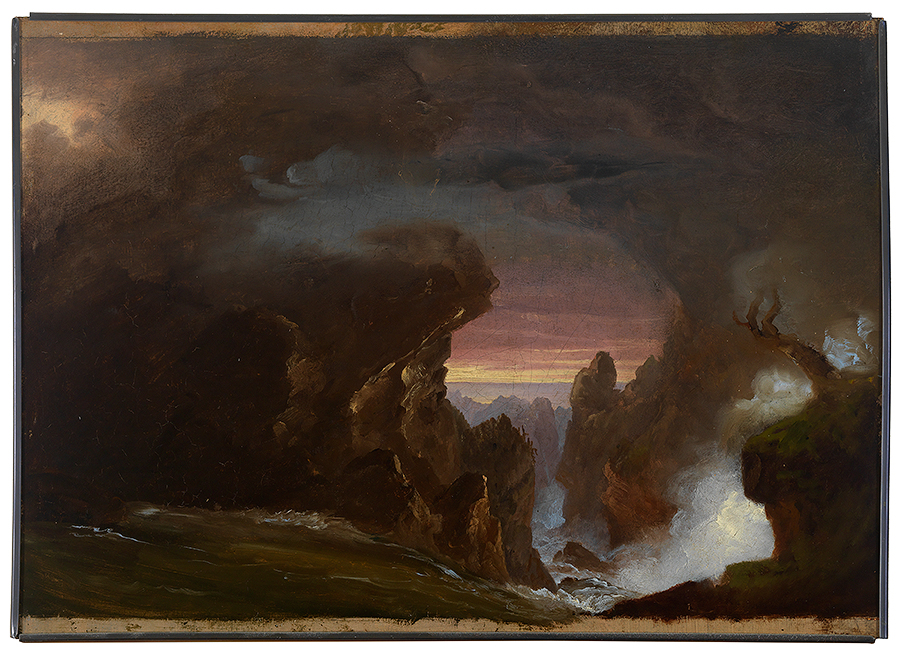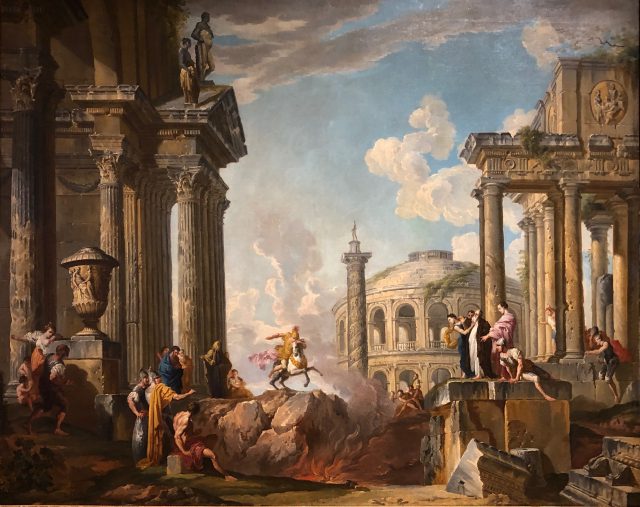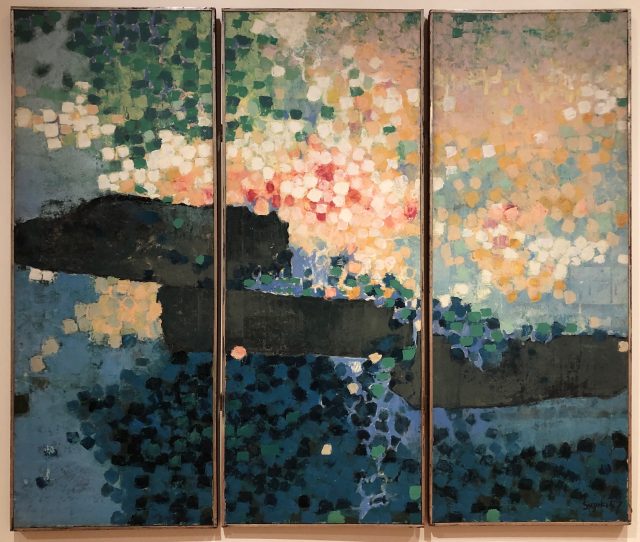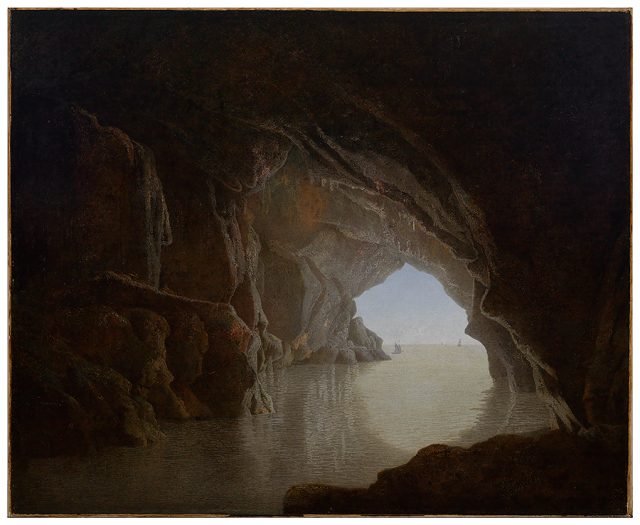Thomas Cole, Compositional Study for the Voyage of Life: Manhood
1840, painting, oil on academy board
Thomas Cole, considered the founding artist of the Hudson River School, believed that landscape painting could embrace a moral and religious mission. In his allegorical series titled The Voyager of Life, he portrayed a single figure representing Man at four points along the “river of life”: childhood, youth, manhood, and old age. In this study for the third and most turbulent of the four paintings, Cole sketched out a landscape of furious rapids, jagged rocks, and a dramatic, stormy sky. He described middle age as a time “when experience has taught us the realities of the world” and “we lift from our eyes the golden veil of early life.”
“Voyage of Life,” a series of four paintings executed by Thomas Cole in his last decade, is a Christian allegory representing the four ages of man, which he called infancy, youth, manhood and old age. This study for the third, and most turbulent, of the four paintings was intended to depict what the artist called manhood’s “trouble,” “cankering cares,” and “despairing thoughts.” In the final version Cole added a voyager adrift in a raft, as well as a guardian angel and a host of demons hovering overhead figuratively competing for the man’s allegiance.
Cole often painted biblical themes set within the American landscape, echoing poetic visions of the New World as a Garden of Eden. Such spiritual associations lay at the foundations of what has been called the Hudson River School of painting, America’s first native landscape tradition, which also included the work of Frederic Edwin Church and Asher B. Durand.
WHAT AM I HEARING?
Cole’s paintings are biblical and operatic, so this soundscape contains a symphonic tune throughout the track. There are waves crashing to indicate the turbulence of the scene, and also vocal snarling, a reference to the demonic presence of “despairing thoughts” in this piece. The track ends with angelic, gentle ambience, to note the calm beauty in the far horizon of the painting.



